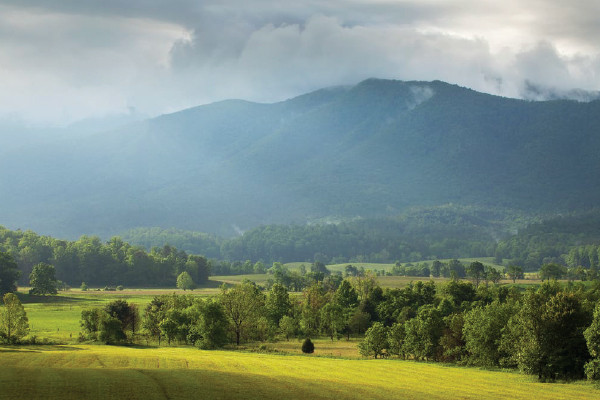Mountains to Come Home to: Q&A with Photographer Paul Hassell
Posted by Logan Mahan on 15th Oct 2019
Paul Hassell is a nature photographer, adventure guide, and founder of [Light Finds](lightfinds.us), whose passion for the natural world is matched only by his love for people. I sat down with Paul at his office in Knoxville to discuss photography—an art he says isn't about “capturing” or “taking” images, but about receiving the light that is freely given to each of us.
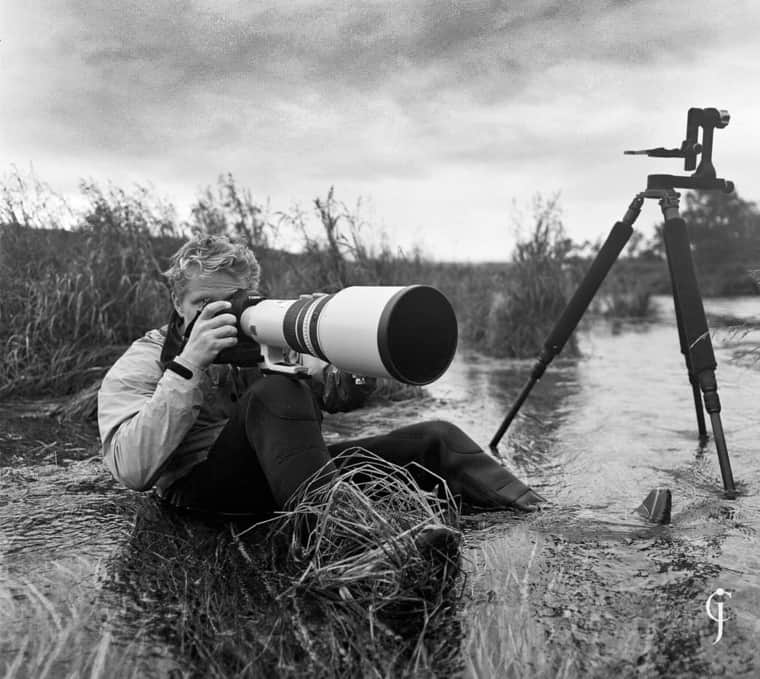
Paul Hassell photographing brown bears in Alaska Josh Carter
First, Paul, could you tell me a little bit about Light Finds? What is it that you do?
My formal answer is “I teach people to see light so they can live a more authentic, passionate life.” By definition, photography means “painting with light.” [The sensor of the camera] is like a black canvas that’s waiting to be painted by light.
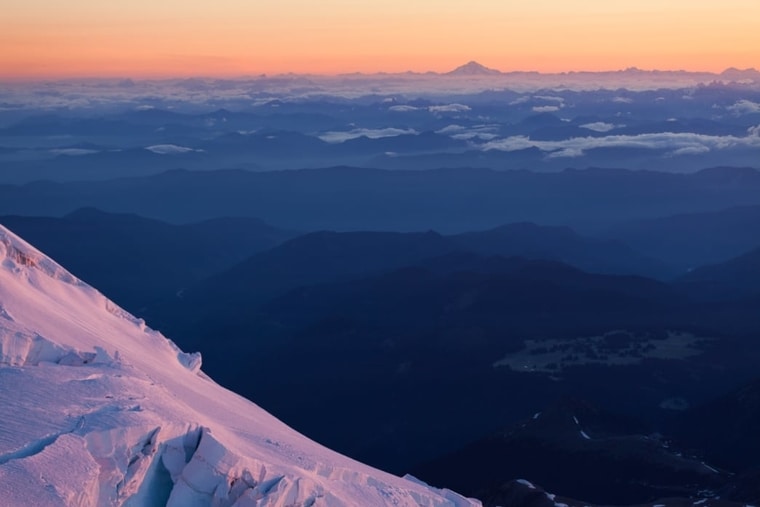
Light Finds is a photography company that specializes in adventure tourism. About half the people that come to the photography workshops that I do locally in the Smokies end up coming on the bigger trips to the Tetons or Alaska or Patagonia, and I’ve ended up with a very loyal client base. It’s typically older people, retirees, and I happen to love that demographic. It seems that after people retire, they’re asking again the same question [that they may have asked in their 20s]. Namely, “What am I going to do with my life?” It’s cool to intersect them at that point. I don’t have answers for them, but to get into beautiful, epic, scenic environments helps them figure it out, I think. My wife, Nora, and I enjoy that season of life with people.
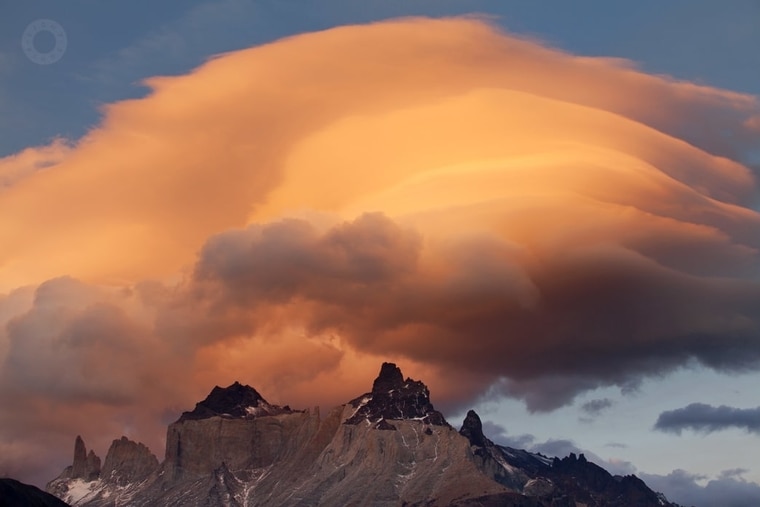
Sunset glow over Cuernos in Chilean Patagonia Paul Hassell
What sets Light Finds apart from other photo tourism companies?
The typical pattern [for photo tourism companies] is: go to the overlook, go back to the lodge; go to the overlook, go back to the lodge; on and on like that. What I’ve added—and I’m not the only one, but it’s rare—is an adventurous edge. In Patagonia, we hike on a trail for five or ten miles, we stay in a hut, then we hike again the next day, five or ten miles, stay in another hut. There’s a journey.
In Alaska, we sleep in a tent among the bears, not in a big expensive lodge. We eat well, we’re not suffering, but there’s an element of being outside of one’s comfort zone that I build into every single trip I put together.
For example, during a recent trip to The Narrows of Zion National Park, I had people in their mid-to-late 70’s walking in rivers on slippery bowling ball rocks and it honestly made their decade. There’s a risk involved in every trip that I do, and my job is to manage that risk: to make sure everyone is outside their comfort zone but not actually physically unsafe.
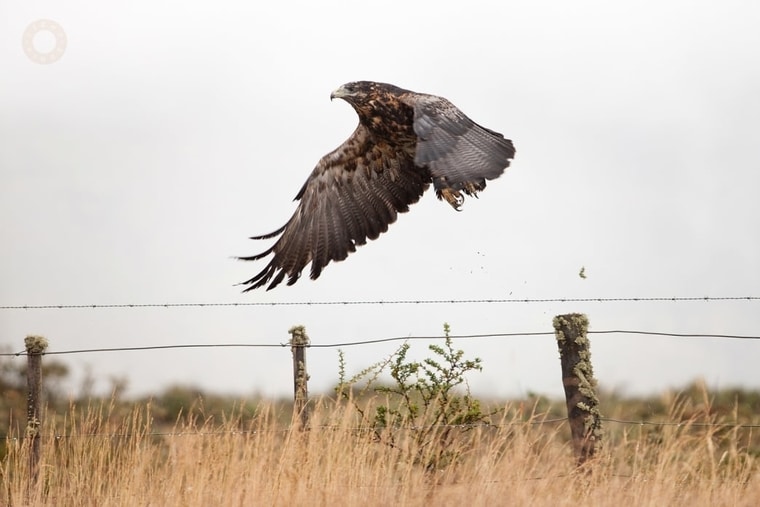
Aguila Mora in flight Paul Hassell
You seem to be as passionate about your clients as you are about the places you take them. I immediately contrast you against Sean Penn’s character, Sean O’Connell, in The Secret Life of Walter Mitty. You know, this enigmatic, shaman-like character that sits alone in the mountains for years and doesn’t talk to anyone. That doesn't seem like your MO.
First thing I’d say is that I do have that contemplative, monkish interior. It’s totally in me. But I’m only half alive, if that’s all there is. From a very young age, being able to come back and tell the story of what happened in solitude was a really important part of my experience. In fact, that was perhaps the most important part of photography for me: that it told the story for me. Better than words did. So I guess I’m wanting to invite and draw people into that experience for themselves. To say, “I don’t want you to always just sit at home and only hear about these great adventures I’ve taken. I’d love to usher you into that type of experience for yourself.”
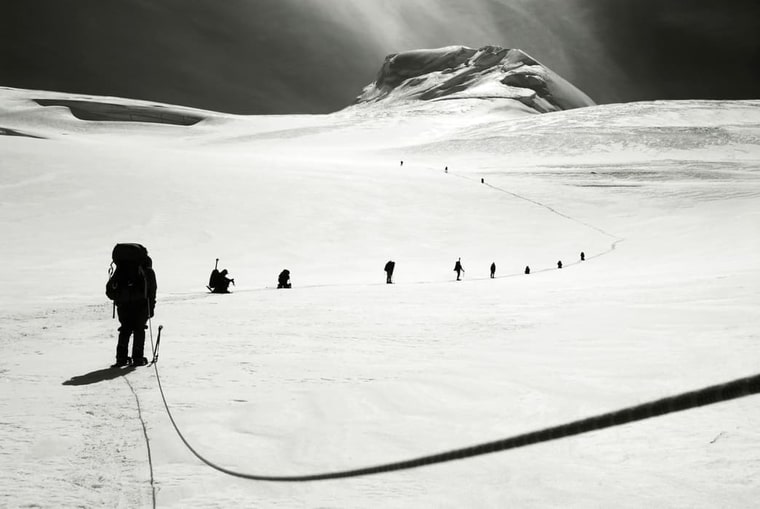
On a trip to Wrangell–St. Elias National Park and Preserve Paul Hassell
What has it been like inviting people out into the places you love and teaching them what you love to do?
Sometimes it's hard. I have people whom you might call “tripod location Nazis." People who just want to know the exact spot to put their camera and exactly the direction to point it. But there's not a right answer. If they want to stalk where I am on a photography tour and put their tripod legs where mine are, I let them do that, but that's not what I want. I want to help them discover what’s making them say “Wow!” in whatever environment we're in and teach them how to translate that feeling into their photography. That's my goal as a teacher. But really, most of all, I just love providing people access to these environments. These [natural spaces] are just better when they’re shared, but for some reason there’s a barrier to entry of nature. It just feels inaccessible to people. So inviting people into that type of experience with nature is important to me. It’s important to have an avenue that says, “Hey this is OK. It’s safe...ish” [laughs]. That matters to me.
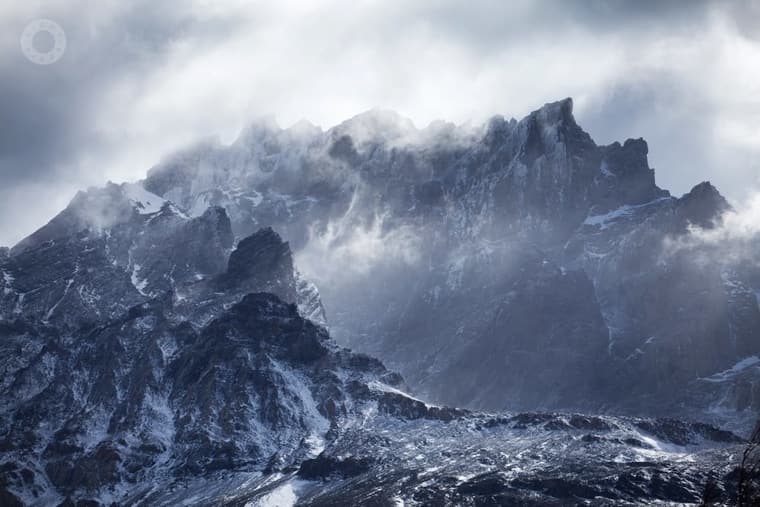
Jagged peaks cut through the clouds at Torres del Paine Paul Hassell
On your website you say, “We do not shoot weddings. But we are all about people.” Tell me more about that.
There is a sort of negativity in the world of nature photography towards people. As if, if you love nature you don’t love that-which-is-not-nature. So there’s this sense that if you really love one thing you have to hate the other thing. And I’ve never really understood that. It’s always sort of rubbed me the wrong way. And so as a kind of pushback against that kind of negativity, I say, “You can love nature and you can love people!” So that statement says that, the type of photography I do does not involve people as the main subject, but people are the main reason I’m about nature photography. I turn down people [that ask me to shoot weddings] not because I would hate it, but because that’s not my true love. I love to connect people to the natural world.
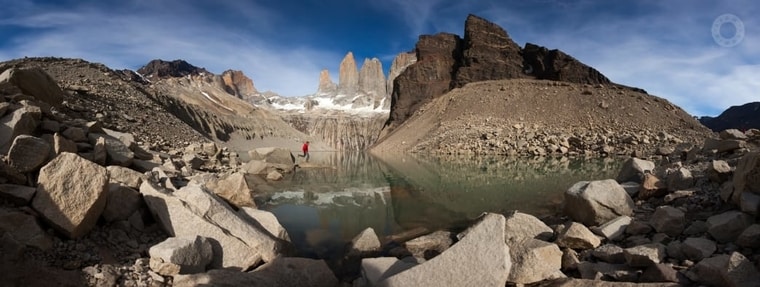
"Leap" at Pano Las Torres Paul Hassell
What’s the most dramatic way photography has affected your life?
In high school, photography gave me permission to get up three hours before sunrise, go on a hike to the top of a mountain, experience a sunrise and be back in time for class. Without the camera, they would have called me a nut. With the camera, though, those same people say, “Man, that’s sexy!” [laughs]. And I say that too about bears. If I bring back these photos [of bears] they think, “Man, that is really cool,” but if you went and sat by a river and just watched bears alone, they’d call you a wacko. So there’s a sense in which photography has been permission to get up early, stay out late, and have experiences that just never would have happened in the first place.
With the ubiquity of cameras brought on by smart phones, many people seem to have a cynical view of photography as something that distracts one from an experience. As someone who sees so much of the world from behind a lens, how would you respond to that?
Photography is like a microscope or a telescope, in that it’s going to allow you to see into a world you would have never seen otherwise. The lens isn’t in the way, it’s allowing you to see. And there’s no reason it has to be a fine art or craft to have that effect. I think that experience can be had with [any kind of camera].
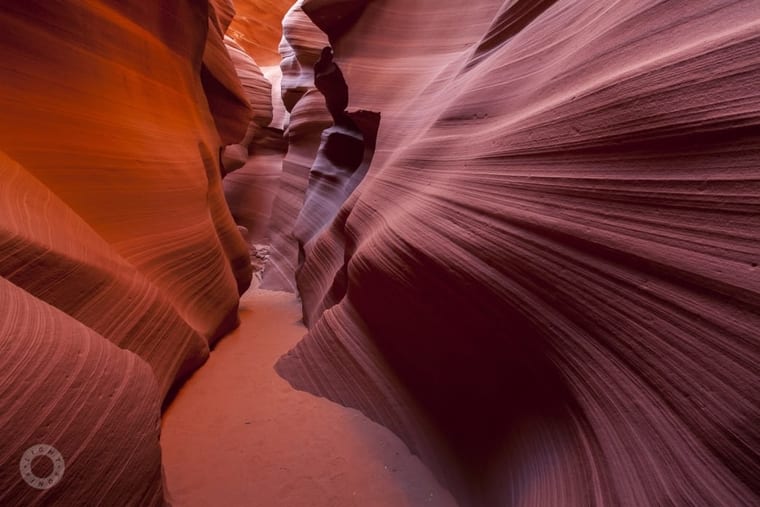
When you’re not taking pictures, what’s your favorite thing to do outside?
Gosh, I would still say just an early morning hike to the top of a mountain, there’s just nothing like it. I love Rocky Top [Thunderhead Mountain]. Number two is LeConte. It’s just a classic. There’s something great about feeling your heartbeat in your chest, the moment you settle down and you stop and you’re perfectly still and your endorphins are pumping and you’re really alert on a physical level. There’s an awareness and alertness to the environment that is really shaping.
So you could probably live anywhere in the world. Why stay in Knoxville? Why stay here in the Appalachians?
I think that, wherever I live, I’ve got to be surrounded by mountains. And it might as well be the oldest mountains on earth. People ask me a lot, “Where’s your favorite place?” and obviously, Patagonia’s pretty cool, right? And Alaska’s pretty cool: to be out on a glacier for a month, climbing in crevasses. But there is a depth and a story to the Appalachian region that nowhere else compares to. [My wife’s] phrase that she loves—and it actually came from Anne of Green Gables, which I can’t believe—is “I like flowers I can live with. Orchids are only things you can visit with.” So with Patagonia, even though it’s really epic and craggy, it’s like an orchid. You can’t live with those mountains. They’re incredibly unwelcoming. And with glaciers, it’s really exciting, but it’s only temporary. You know you’re just a visitor. But here in the Appalachians, you can really make a home.
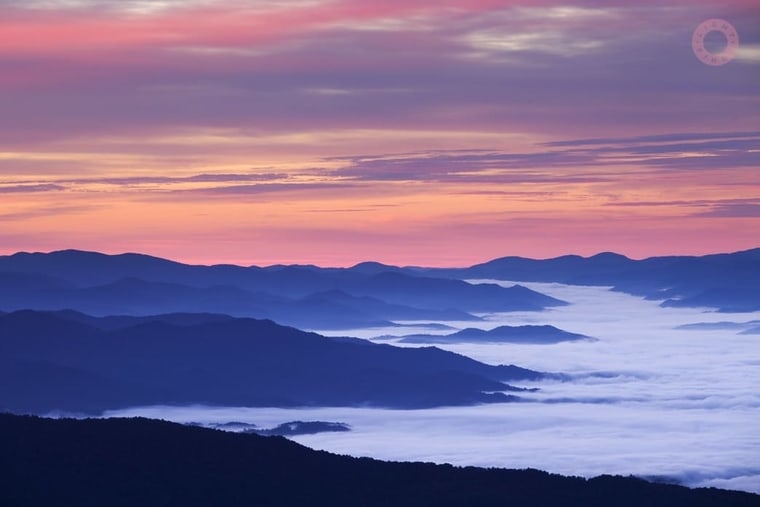
Sunrise in the Smokies Paul Hassell
What would you change about Knoxville?
I would change a mindset in our people. For us to quit striving to bring in qualities of other cities and instead just embrace who and what we actually are, that would be a powerful shift, I think.
And who do you think we are?
I’m not sure, and I don’t think as a city we’re sure, but I would say it has to do with our Appalachian roots. It has to do with our environment and the fact that this Ridge and Valley Province influences the way people think and what our values are. And I don’t think we have to nail it. I don’t think there has to be a city-wide mission statement and purpose, but I think the idea that we’re on a journey just as any human individually is on a journey to figure out who they are—that’s what matters.
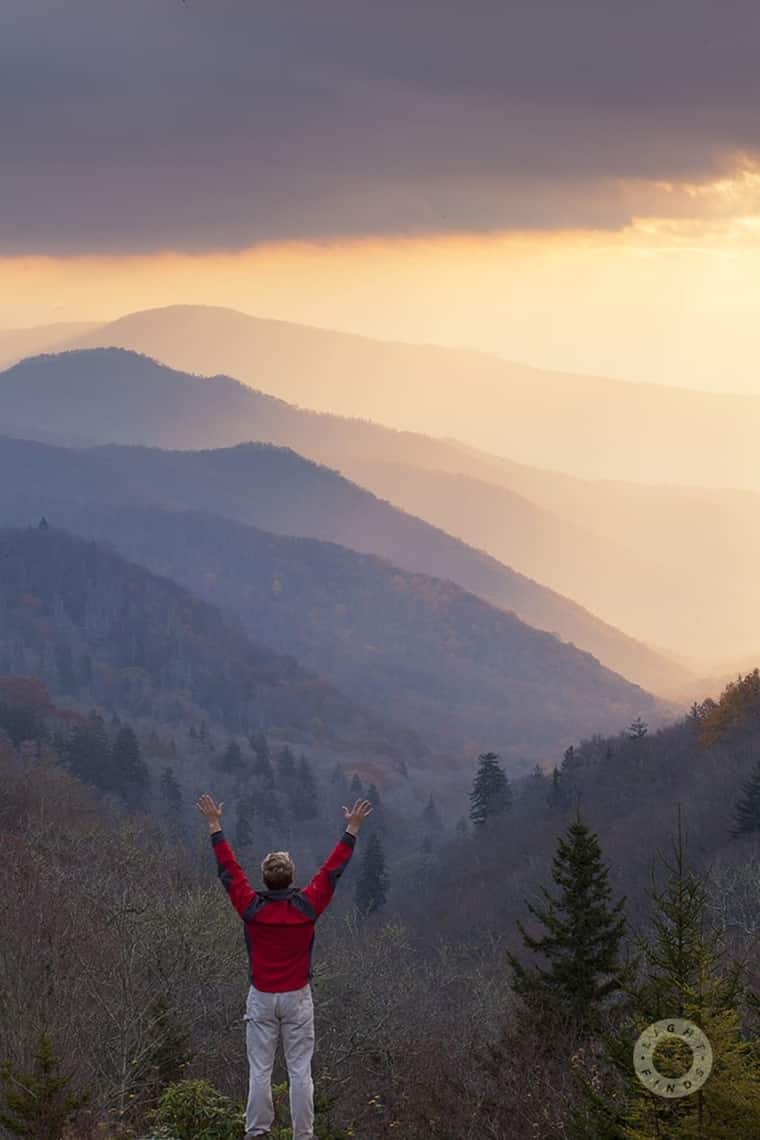
What would you say to convince someone to stay in Knoxville?
I would say, get deep into these woods, stay longer than you’re comfortable, and see what happens. I think our physical environment has a ton to do with who we are as a city, but if you don’t enjoy that experience and get stretched by our physical location, then it’s just some buildings that happen to be at an address called Knoxville, Tennessee, and then there isn’t a reason to stay, and I’d say “Go.” Go to some other city where the value is located somewhere in the manmade physical structures. We don’t honestly have an impressive skyline. It’s not really very beautiful. But I think the people who are shaped by the landscape make Knoxville beautiful.
Written by Logan Mahan for RootsRated and legally licensed through the Matcha publisher network. Please direct all licensing questions to legal@getmatcha.com.
Share on:

